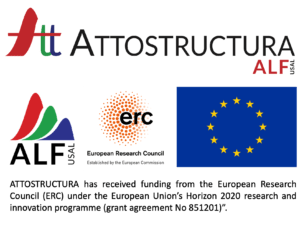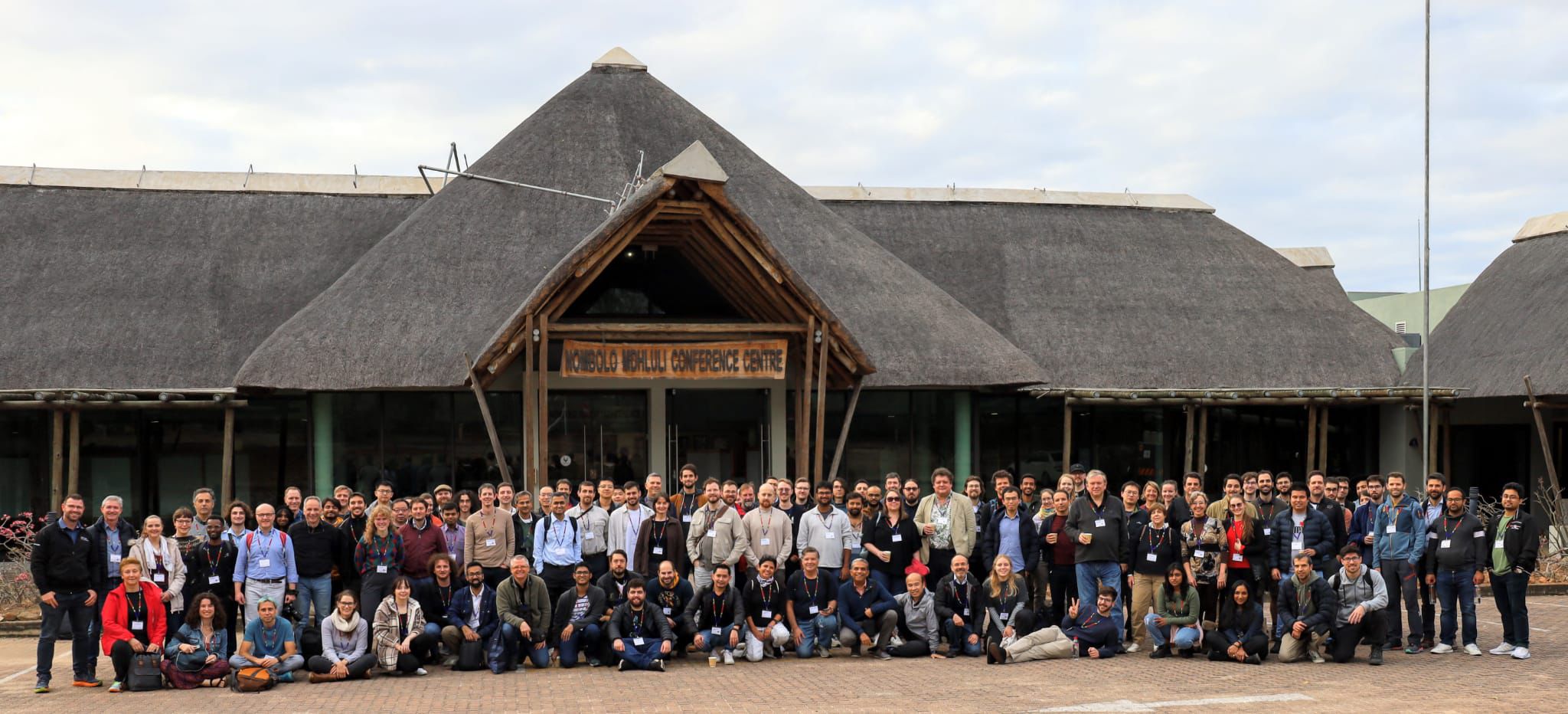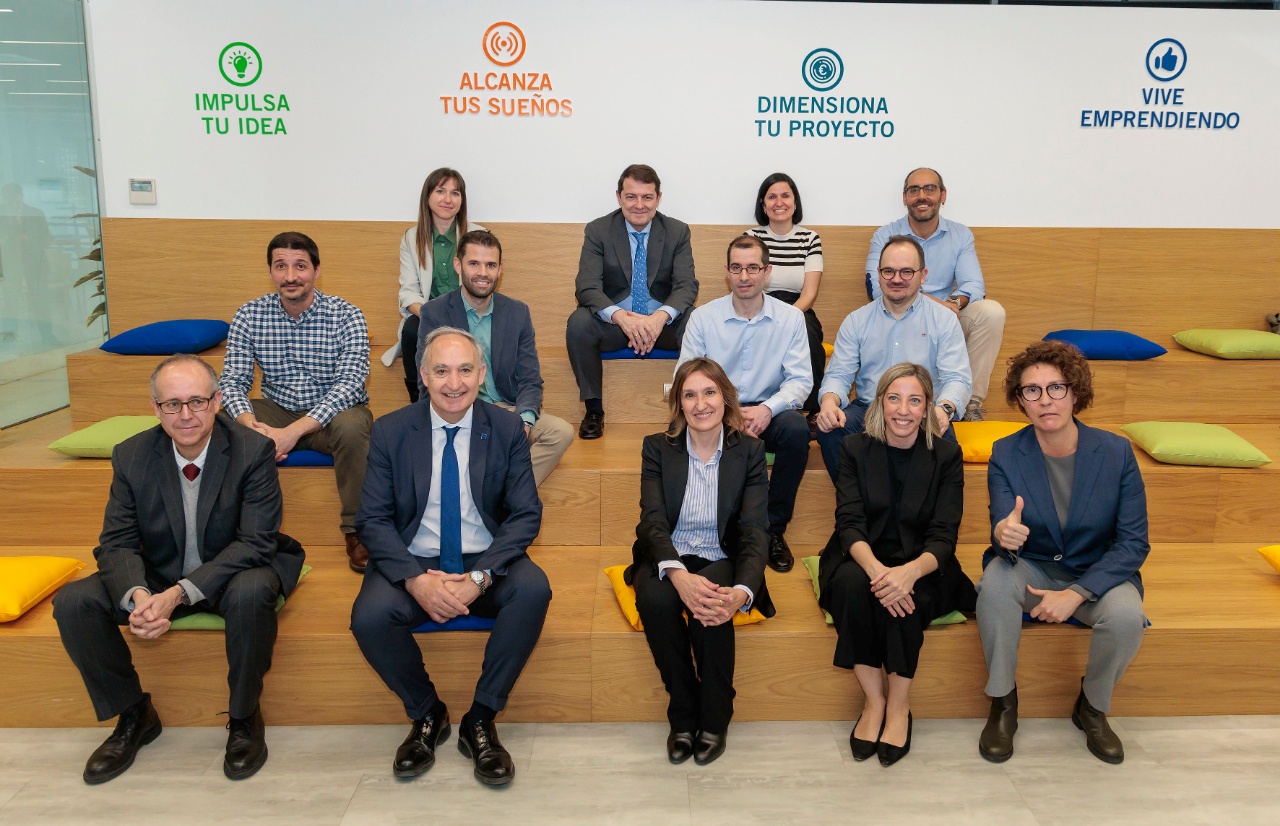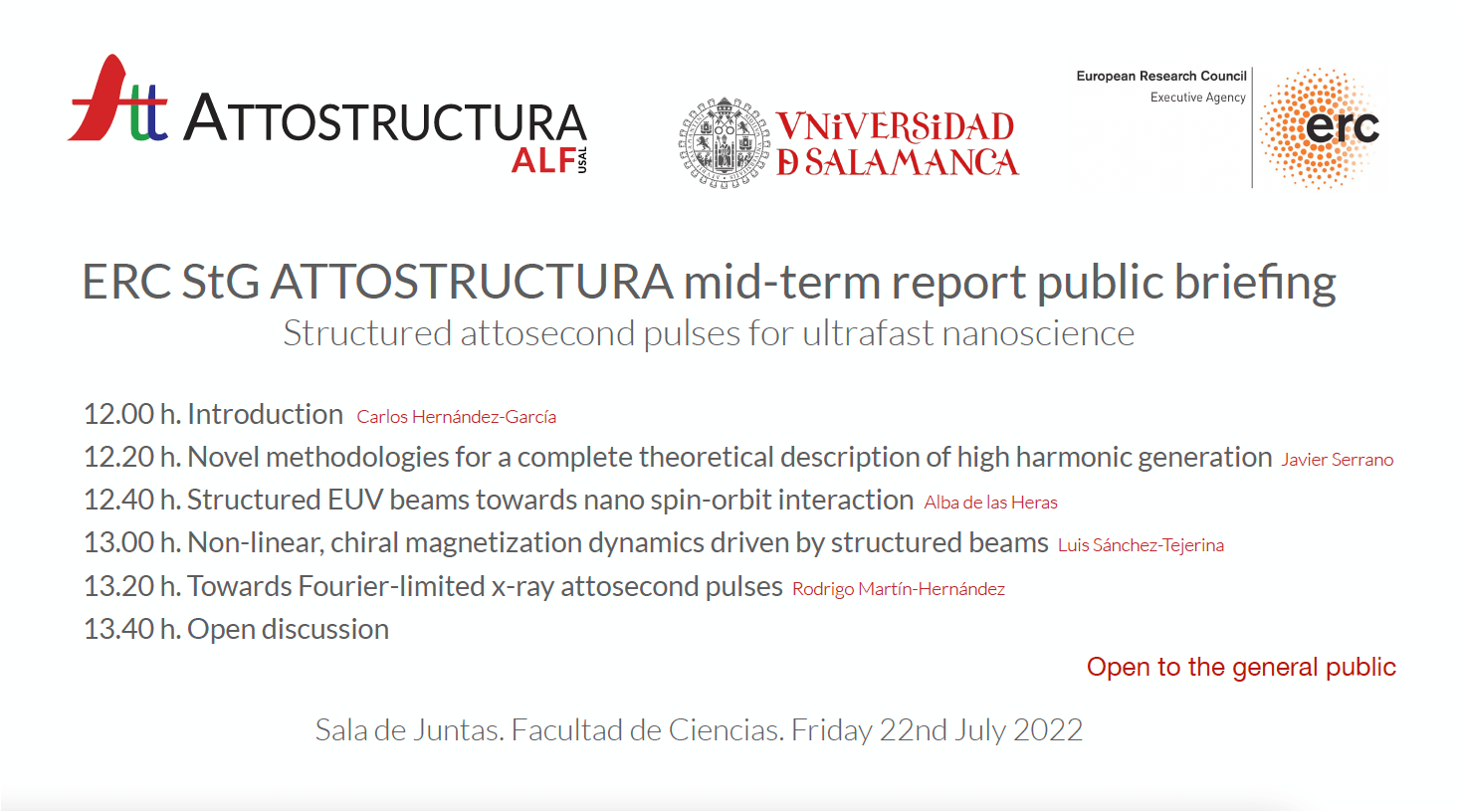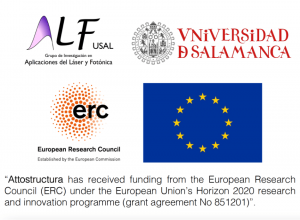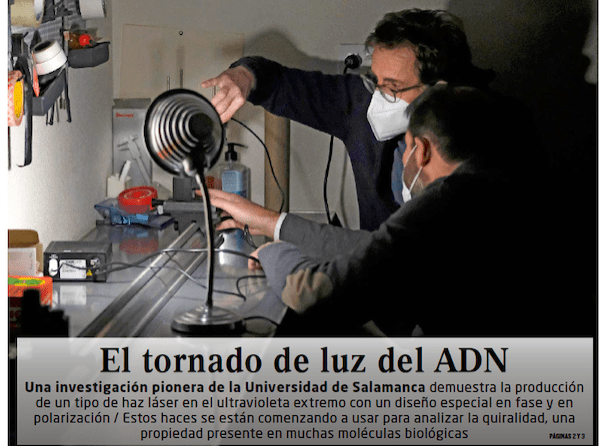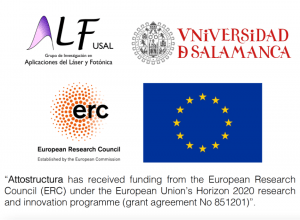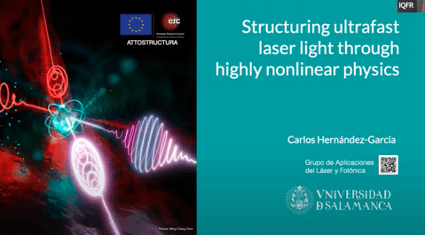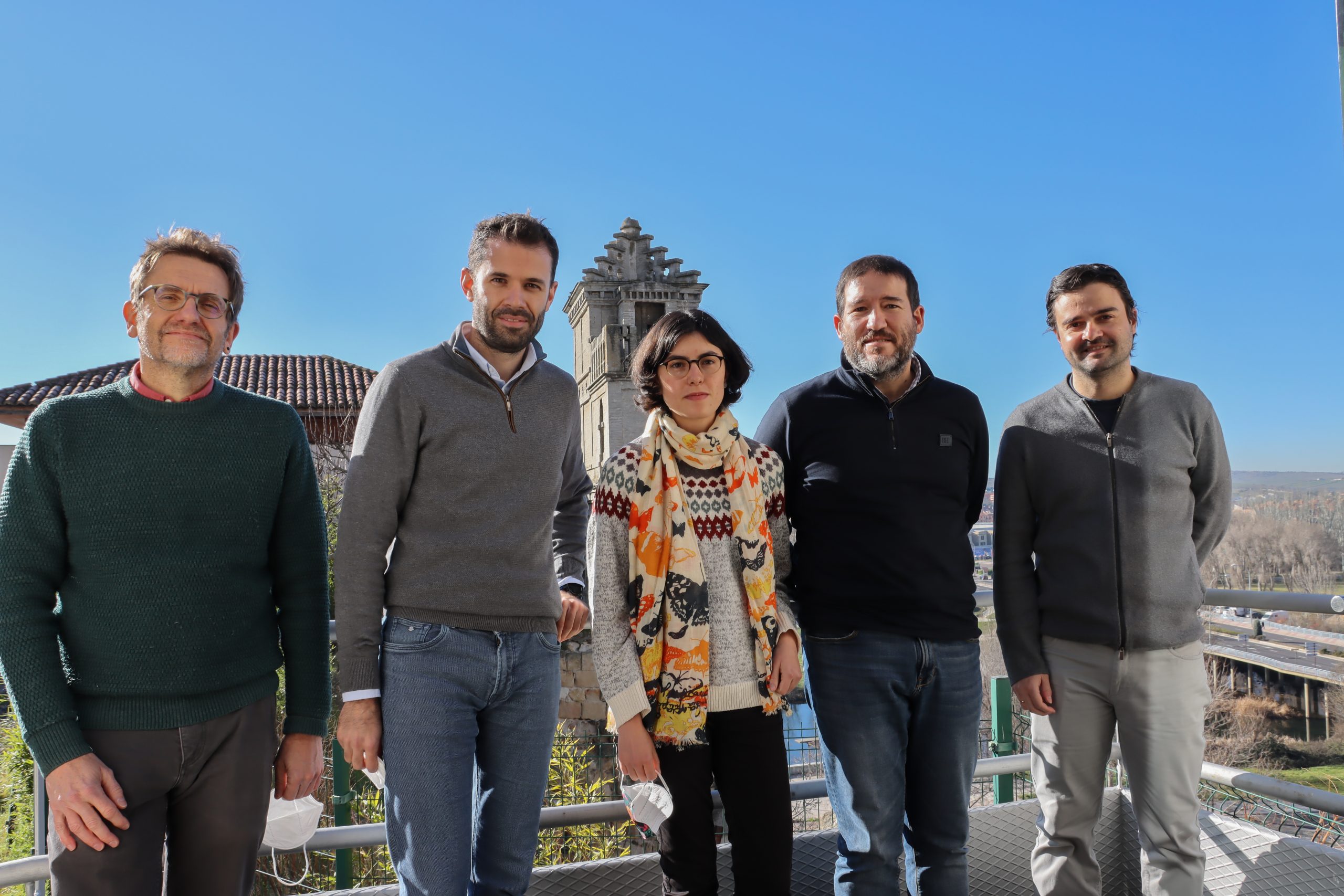The PhD candidate will enroll the project “Structured attosecond pulses for ultrafast nanoscience” at the Laser Applications and Photonics Research group (ALF-USAL) at University of Salamanca (https://laser.usal.es/alf/en/home/). The candidate will find a dynamic and international working environment, and will enrol in the theoretical group. ALF-USAL is an interdisciplinary Optics research group with expertise in both theory (strong-field physics, nonlinear optics, ultrafast phenomena, attosecond science) and experiments (ultrashort pulse characterization, pulse shaping, photonic crystals, ultrashort micro-machining). The candidate will explore the generation and ultrashort structured pulses and their application in ultrafast magnetism, an emerging field that is opening exciting scenarios in laser-matter interaction at the most fundamental level, merging the fields of Optics and Magnetism.
Some of the recent results have been published in high impact factor scientific journals:
-“Generation of extreme-ultraviolet beams with time-varying orbital angular momentum”, L. Rego, K. M. Dorney, N. J. Brooks, Q. Nguyen, C-T. Liao, J. San Román, D. E. Couch, Allison Liu, E. Pisanty, M. Lewenstein, L. Plaja, H. C. Kapteyn, M. M. Murnane, C. Hernández-García, Science 364, eaaw9486 (2019). Highlighted in the media:
-“Controlling the polarization and vortex charge of attosecond high-harmonic beams via simultaneous spin-orbit momentum conservation”, K. M. Dorney, L. Rego, N. Brooks, J. San Román, C-T. Liao, J. L. Ellis, D. Zusin, C. Gentry, Q. Nguyen, J. M. Shaw, A. Picón, L. Plaja, H. C. Kapteyn, M. M. Murnane, C. Hernández-García, Nature Photonics 13, 123–130 (2019).
-“Extreme-Ultraviolet Vector-Vortex Beams from High Harmonic Generation“, Alba de las Heras, Alok P. Pandey, Julio San Román, Javier Serrano, Elsa Baynard, Guillaume Dovillaire, Moana Pittman, Charles Durfee, Luis Plaja, Sophie Kazamias, Olivier Guilbaud, Carlos Hernández-García, Optica 9, 71-79 (2022).
-“Necklace-structured high harmonic generation for low-divergence, soft X-ray harmonic combs with tunable line spacing”, Laura Rego, Nathan J. Brooks, Quynh L. D. Nguyen, Julio San Román, Iona Binnie, Luis Plaja, Henry C. Kapteyn, Margaret M. Murnane, Carlos Hernández-García, Science Advances 8, eabj7380 (2022).
